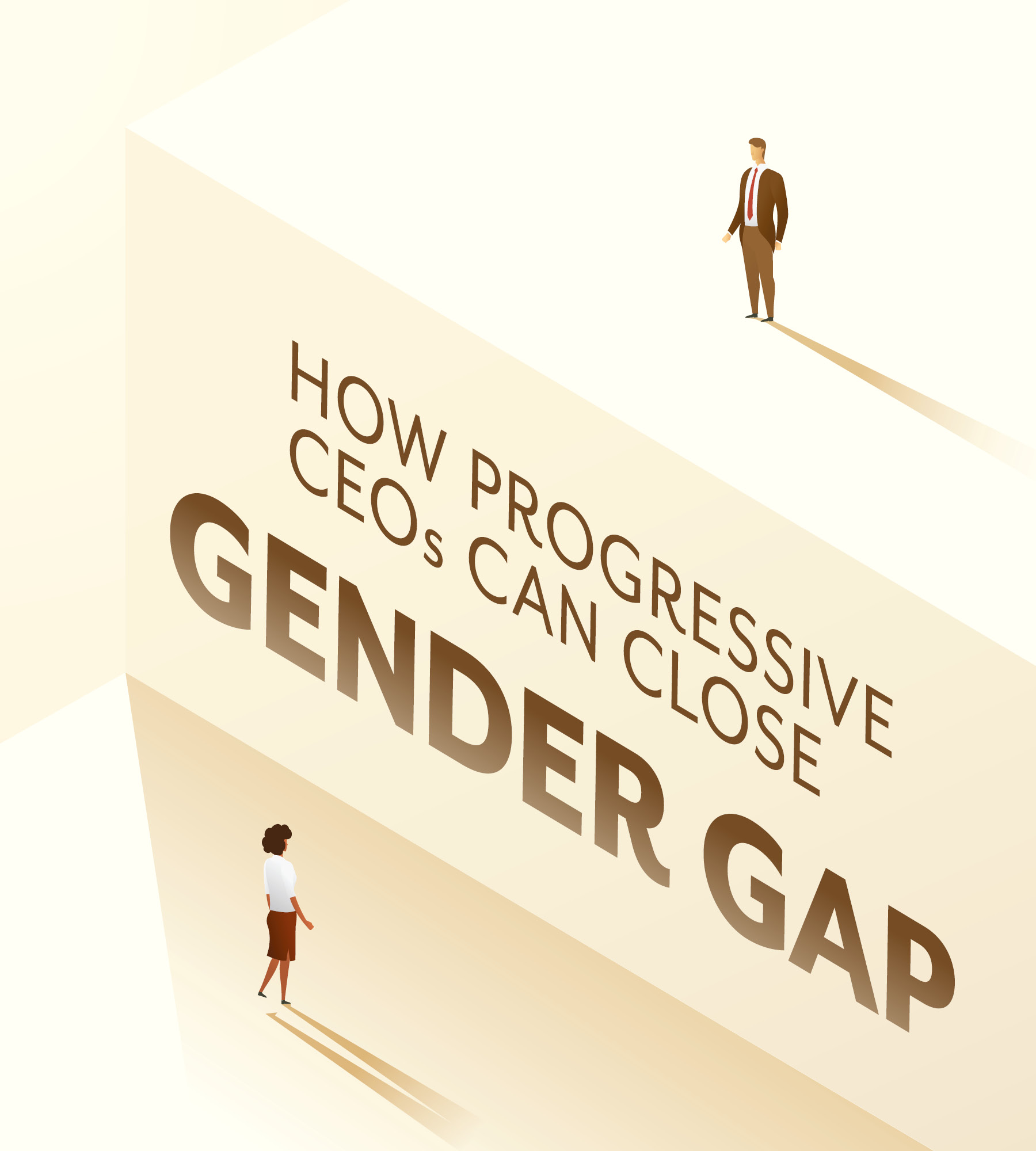Language
You can read the magazine in one of the following languages
Geolocation
You can read the global content or the content from your region

The 2022 ‘Global Leadership Gender Gap’ report highlights a stark reality: nearly 70 percent of leadership positions globally are occupied by men.
This gender imbalance is not just a statistical concern but a reflection of the systemic barriers and cultural norms that continue to limit women’s access to, and success in, leadership positions.
Increasing women’s economic participation and achieving gender parity in business and government leadership are critical levers to address the broader gender gaps in households, societies and economies. If this gap were closed, Deloitte estimates that US$84 billion would be added to the Australian economy each year. However, Deloitte’s 2024 ‘Women in the Boardroom’ report highlights a stark reality: women hold less than a quarter (23.3 percent) of board seats globally.
CEOs must pivot from simply acknowledging this gap to actively implementing strategies that foster gender equity in the workplace and, in turn, drive organizational excellence and better societal outcomes.

CEOs must pivot from simply acknowledging this gap to actively implementing strategies that foster gender equity.
The Bankwest Curtin Economics Centre, in partnership with the Australian Workplace Gender Equality Agency, has provided compelling evidence that organizations perform better when more women are in leadership roles.
Their research unequivocally shows that women in leadership contribute significantly to enhanced profitability, performance and productivity, adding 6.6 percent to the market value of ASX companies.
This isn’t merely a matter of financial gains; it’s about fostering a workplace that leverages diverse perspectives, promotes collaborative management and enhances corporate social responsibility – factors crucial for success in the new status quo following the COVID-19 pandemic.
A multitude of organizations share the challenge of attracting, retaining and developing the best and brightest talent. There has been a race for talent for decades. However, this has been exacerbated by skill shortages across many sectors and the shifting grounds of rapid technological advances.
Moving from mere conversations to actionable strategies that close the leadership gender gap requires us to be aware of the most significant factors that enhance women’s ability to reach leadership positions. These include:
• A strategic talent management framework – forecasting labor trends, skills needs and the initiatives required to attract, retain and develop the best and brightest women
• A diversity, equity and inclusion (DEI) strategy embedded in the business beyond HR, which will ensure that the organization can attract and retain female talent and help talented women reach their full potential
• Policies and practices that align with DEI and talent management strategies throughout the employee lifecycle
• Inclusive managers. These are central to a woman’s career progression and are critical in ensuring an equitable workplace for women
• Managers provided with explicit accountability and support to ensure they run an inclusive leadership lens over the hundreds of talent-related decisions they make, such as hiring, firing, promotion, pay, professional development, coaching and performance management
• Managers receiving systematic skill-building and training on being inclusive leaders, which is in line with the organization’s strategic talent management plan
• Talented women participating in development experiences to gain and demonstrate the critical leadership skills required for advancement
• Talented women being given opportunities to demonstrate the critical skills required for recruitment or promotion
Introducing quotas to increase the number of women in leadership is an incomplete strategy. Quotas implemented without addressing all the barriers to women’s advancement are unlikely to succeed.

Research has actually shown that quotas will have a negligible impact on the share of women in senior roles in the 5–10 years after implementation.
Developing a DEI strategy as a component of the business strategy enabled by a strategic talent management plan will work and close the leadership gender gap in organizations. A strategic talent management plan that enables women will include:
• Inclusive recruiting practices: Deploy hiring practices that minimize biases and promote diversity. This can include using software to anonymize resumes, implementing diverse interview panels and ensuring job descriptions, advertisements and other collateral are gender decoded.
• Equity audits: Conduct regular equity audits to assess and address pay gaps, promotion disparities and representation issues across the organization’s career stages and divisions. Identify where women’s and men’s leadership representation diverge and target those areas first.
• DEI learning and development: Provide ongoing education and training programs on mindsets, cultural competency and inclusive leadership tailored to managers at all levels of the organization. This is critical for leaders at every level, especially frontline managers, who are least likely to have access to DEI training.
• Career development and strategic mentoring programs: Create targeted development programs and strategic mentoring opportunities for women to learn critical business skills such as business, strategic and financial acumen.
• Progressive policy: Family friendly policies that recognize and accommodate different needs and lifestyles, such as flexible hours, remote work options and parental leave can help attract and retain a diverse workforce and acknowledge that women are still disproportionately responsible for family commitments.
• Succession planning with a gender equity lens: Ensure talent pipelines and succession plans actively consider and promote diversity, aiming to close the leadership gap across gender and other demographic lines. Have specific, objective criteria for succession planning, along with independent people observing succession planning and talent management sessions to intervene when biases come into play.
It takes time to transform promises into long-term actions. We must shift our thinking about leadership and success. Instead of measuring it solely through traditional methods, we must adopt a more inclusive and fair approach.

This means acknowledging the critical role of women in leadership positions, not just as a token gesture but as an essential strategy for the growth and strength of any organization.
To this end, CEOs play a pivotal role. The progressive CEO will:
• Initiate and champion workplace gender equality efforts and recognize that this task is not solely the responsibility of HR and women themselves
• Actively advocate for DEI initiatives, understanding that their leadership and commitment can catalyze significant change
• Challenge and change the existing norms and practices perpetuating gender disparities in leadership
• Assign resources and hold other leaders accountable for advancing more women into leadership to unlock the organization’s full potential
Progressive CEOs have workplace gender equity built into their business strategy, and having a strategic talent management plan enables it to come to life.

Michelle Redfern
Contributor Collective Member
Michelle Redfern is in fearless pursuit of closing the global leadership gender gap and enabling women to have soaring lives and careers. She is the Founder of Advancing Women in Business and Sport, Co-Founder of the Lead to Soar network, podcast and summits, and host of the ‘Advancing Women in Sport’ podcast. Michelle has been named as one of Australia’s Top 100 Women of Influence and is a judge for the VicSport Awards. She is a Graduate of the AICD and holds an Executive MBA (Distinction). Her book ‘The Leadership Compass’ is the ultimate guide for women leaders to reach their full potential. For more information visit https://www.michelleredfern.com/